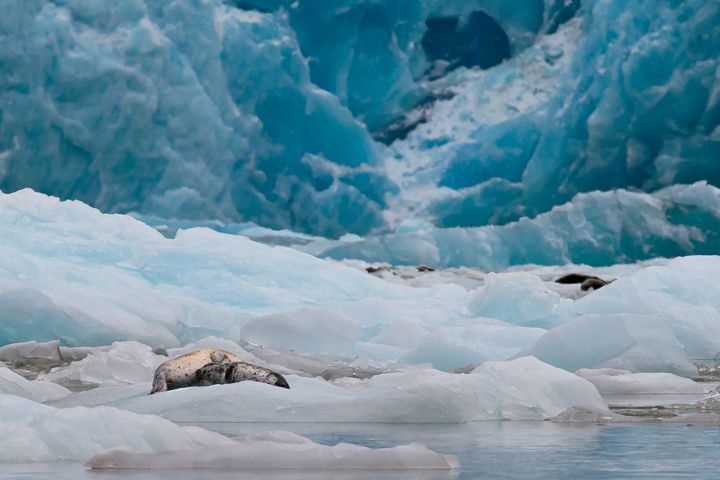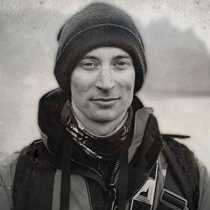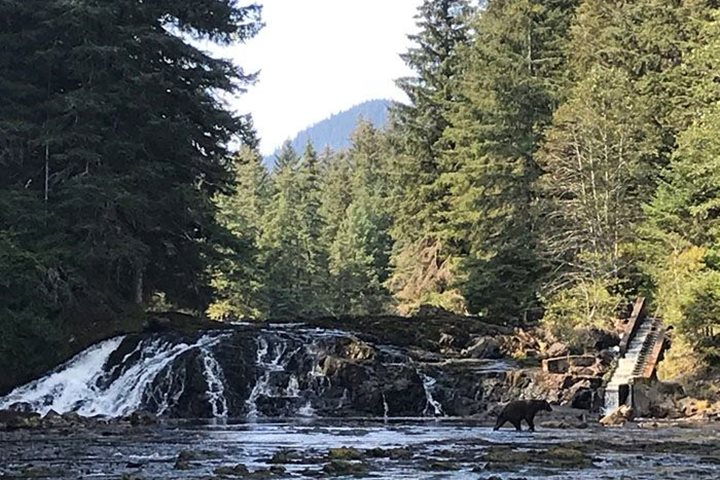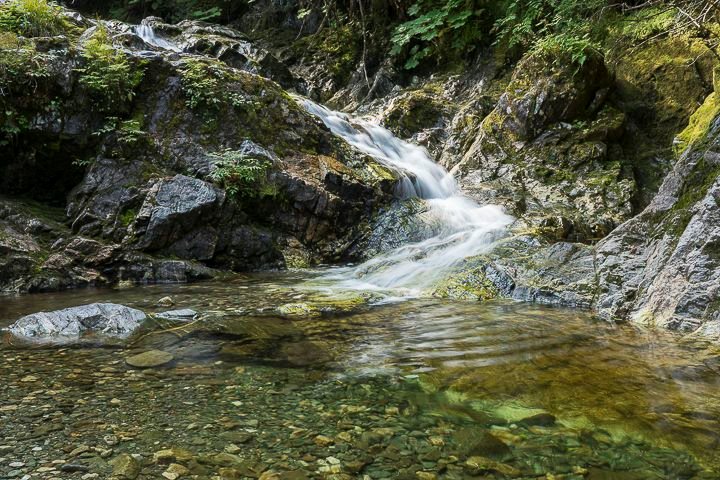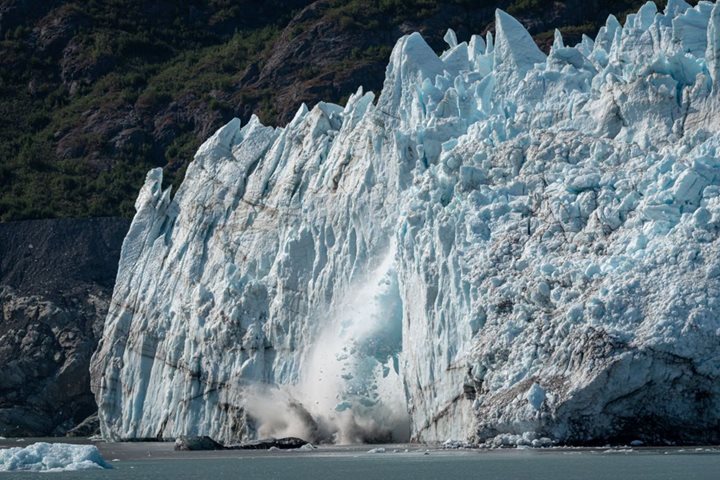A shallow glacial moraine marks the entrance into Holkham Bay and the Tracy Arm─Fords Terror Wilderness. We crossed it early this morning, with the intention of exploring the narrow fjord and observing the South Sawyer Glacier. It was truly a trip through time, as we observed what our distant human ancestors must have seen during the period of the Last Glacial Maximum. National Geographic Sea Bird sailed to within about four miles of the face of the tidewater glacier. Then, we launched our skiffs to move carefully through the icebergs, bergy bits, growlers, and brash ice that blocked our path to the glacier. Within moments of setting out, we encountered numerous harbor seals. Some were swimming, while others were hauled out on the ice. We saw too many to count, but a conservative estimate would be about two hundred of these shy but inquisitive creatures. Mother seals nursing small pups were a common sight; the seals use floating ice as a safe platform on which to give birth and wean their young. Also, the constraints of the narrow fjord and the floating ice help protect the seals from killer whales, which use echolocation when hunting their prey in open water.
The setting is breathtaking. Steep, glacially polished walls of rock rise from the water. Patterns within the rock show multiple chapters of the history of Earth, with igneous intrusions cutting through and across the grain of highly altered metamorphic rock. Regardless of the scientific significance of these rocks, the patterns preserved are beautiful, and contrast sharply with the white and deep blue of the glacial ice. Cold but enthralled, we returned to National Geographic Sea Bird to warm up and prepare for our next adventure.
A brief visit to the “Hole in the Wall” waterfall evolved into an encounter with a black bear feeding off invertebrates along the water’s edge. We watched and photographed its behavior, and then moved down Tracy Arm toward Stephens Passage. Most passengers retreated to the lounge for some quiet time spent reviewing photos, reading, or talking with family and new friends met on the ship. Some enjoyed an opportunity to paint with watercolors, using a small ice block plucked from the water of the fjord.
After Recap and dinner, we encountered a very unusual sight: a dead whale on the shore, with more than 40 bald eagles and a large brown bear feasting on the decomposing carcass. We have no knowledge of how the whale died, but its location near a busy channel along the inside passage suggests a ship strike as a likely cause. Whatever the circumstance, the death provided an important meal for the bears and eagles awaiting the first salmon runs.

